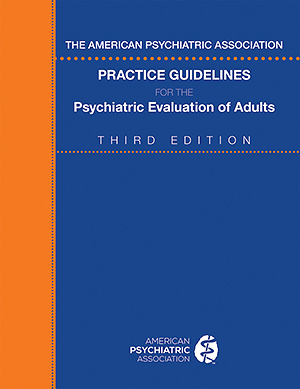Executive Summary
Sections
Excerpt
These Practice Guidelines for the Psychiatric Evaluation of Adults mark a transition in the American Psychiatric Association’s Practice Guidelines. Since the publication of the Institute of Medicine (2011) report, “Clinical Practice Guidelines We Can Trust,” there has been an increasing focus on using clearly defined, transparent processes for rating the quality of evidence and the strength of the overall body of evidence in systematic reviews of the scientific literature. These guidelines were developed using a process intended to be consistent with the recommendations of the Institute of Medicine (2011), the Principles for the Development of Specialty Society Clinical Guidelines of the Council of Medical Specialty Societies (2012), and the requirements of the Agency for Healthcare Research and Quality (AHRQ) for inclusion of a guideline in the National Guideline Clearinghouse. Parameters used for the guidelines’ systematic review are included with the full text of the guidelines; the development process is fully described in a document available on the APA Web site: http://www.psychiatry.org/File%20Library/Practice/APA-Guideline-Development-Process--updated-2011-.pdf. To supplement the expertise of members of the guideline work group, we used a “snowball” survey methodology to identify experts on psychiatric evaluation and solicit their input on aspects of the psychiatric evaluation that they saw as likely to improve specific patient outcomes (Yager et al. 2014). Results of this expert survey are included with the full text of the practice guideline.



